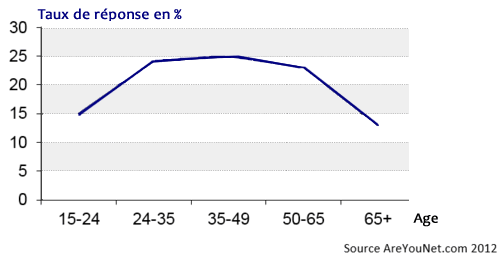Survey participants are called a “sample” because they represent the population under study, which is rarely consulted as a whole.
Several methods can be used to build a sample

The number of responses is tied to a notion of statistical reliability that refers to the calculation of confidence intervals (statistical law).
To simplify, the greater the size of your sample, the greater the reliability of answers. However, going beyond certain size thresholds will not bring more information.
Be careful to avoid mixing sample terms. It may be a question of the contact
base used at the start or of the results base. The structure, in particular
the socio-demographic structure, will be different.
Basic rule: Precision is inversely proportional to four times the sample size.
For a twofold increase in precision, the sample must be multiplied by four!
Thus, if 20% of your customers are dissatisfied on a particular question, a sample of 100 individuals will guarantee a confidence interval of 8 points. If this eight-point interval seems insufficient, you should multiply the sample by four (400 individuals) to reduce this interval by half (to 4 points).
Each reduction in the confidence interval will follow the same rule, as shown in the example below calculated for a 20% dissatisfaction rate:
Avantage | Inconvénients |
|---|
In practice, you will want to optimize your budget and limit the sample size to the strict minimum.
Experience has shown that in a customer satisfaction study, opinions are widely scattered and the rate of dissatisfied customers is relatively low (<20%). This distribution enables limiting sample size to the strict minimum. In addition, if 50% of your customers were shown to be dissatisfied about a given point, you should worry less about whether the "true" response rate is 45% or 55% and more about urgently mobilizing to save the brand.
It is also important to ask yourself how precision operates. If a study of 200 customers gives you five obvious priority actions to carry out, would a study of 800 customers, for four times the budget, change your action plan?
If you work from your database or website, the response rate will be directly impacted by the following elements:
Also, if your questionnaire abandonment rate is too high, this means that respondents are put off by certain elements in your questionnaire.
Not surprisingly, it is more difficult to get a response from a CEO than from an administrative employee. This will have an impact on the basic structure of the response rate. Therefore, it is important to anticipate this natural deformation by over-representing individuals who will respond less frequently in the starting base.

When you build your starting base, “deform” it according to the response rates
that are normally observed or supposed to occur. In this way,
you will have a homogeneous result base without having to adjust it.
JOIN THE THOUSANDS OF AREYOUNET USERS AND MAKE YOUR STUDIES INDEPENDENTLY.
Discover the solution to make the right decisions

Hello
Let's talk directly